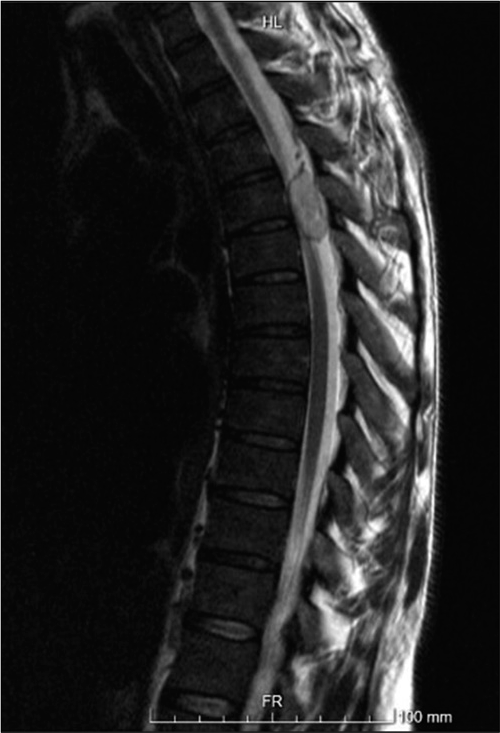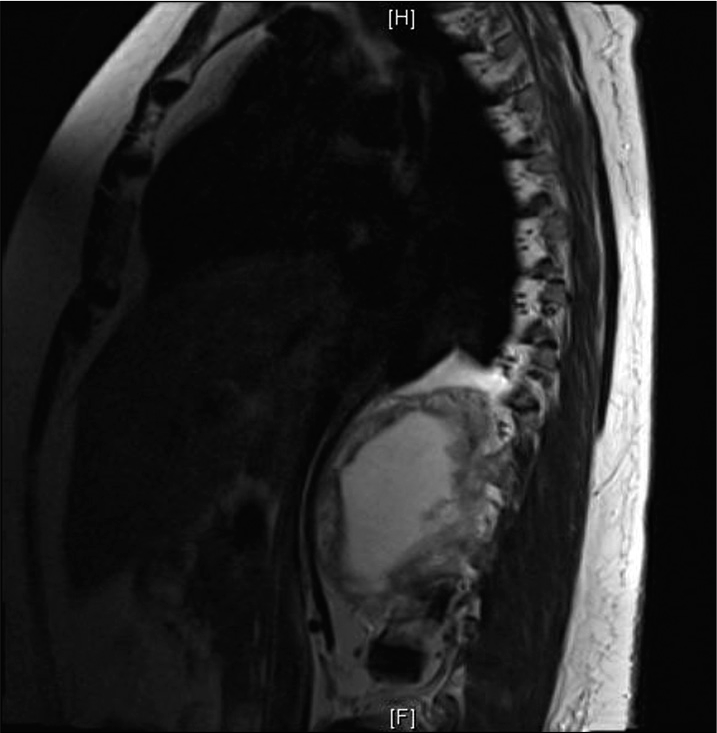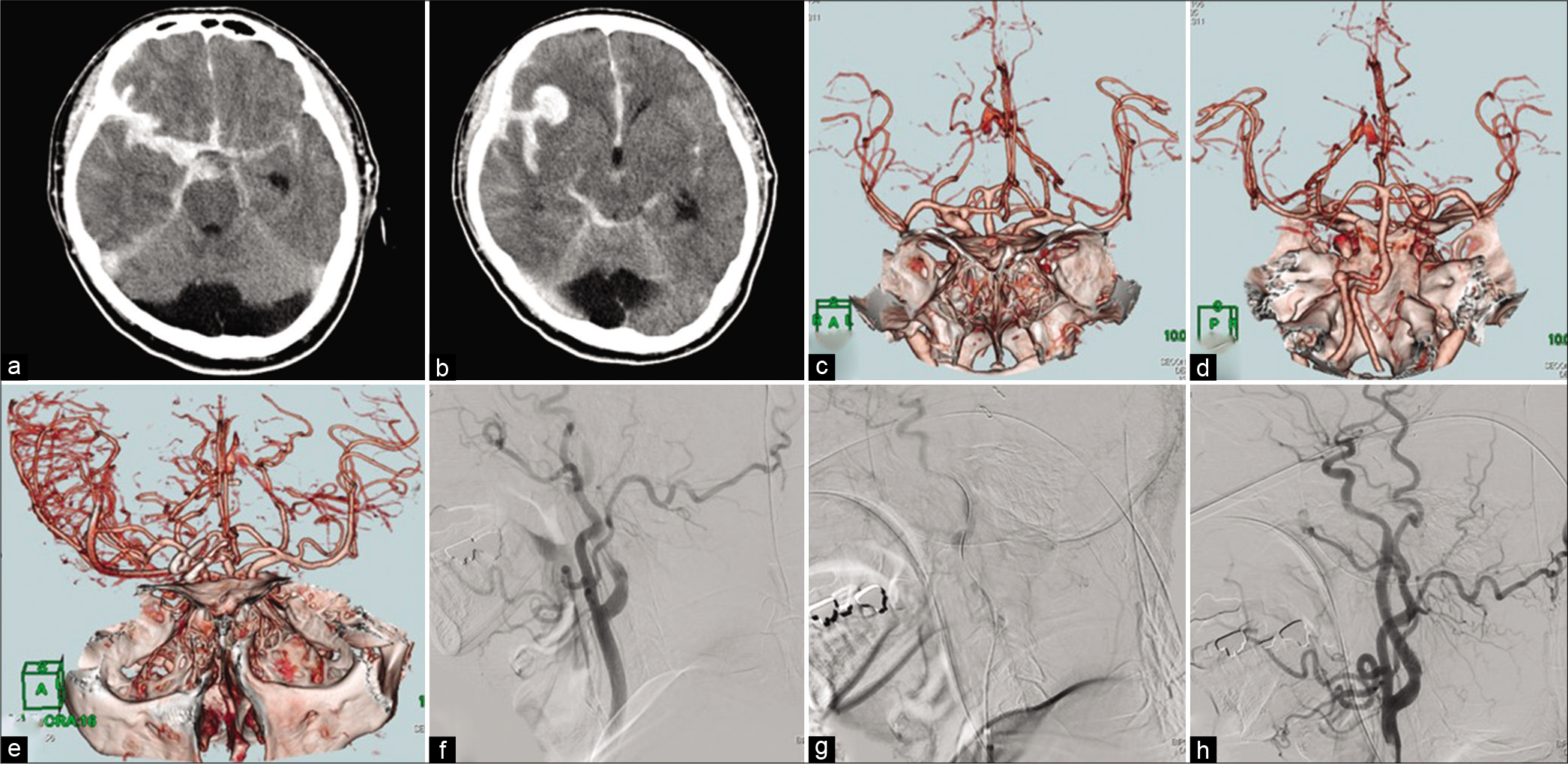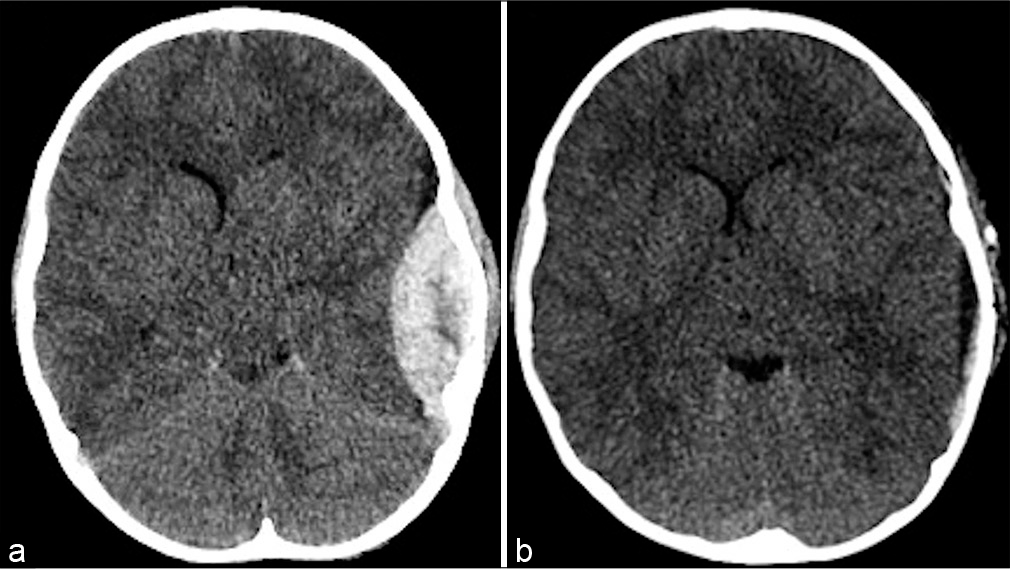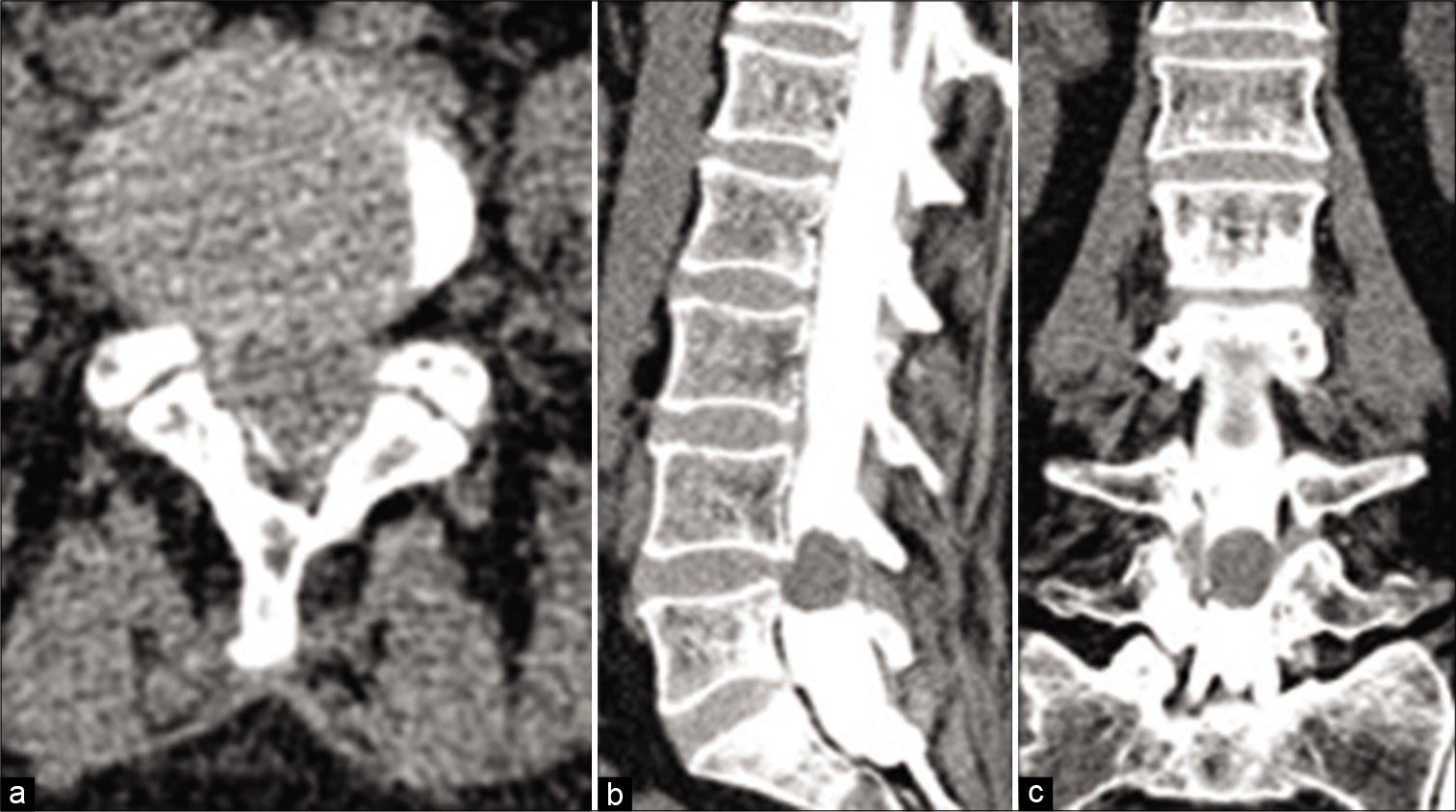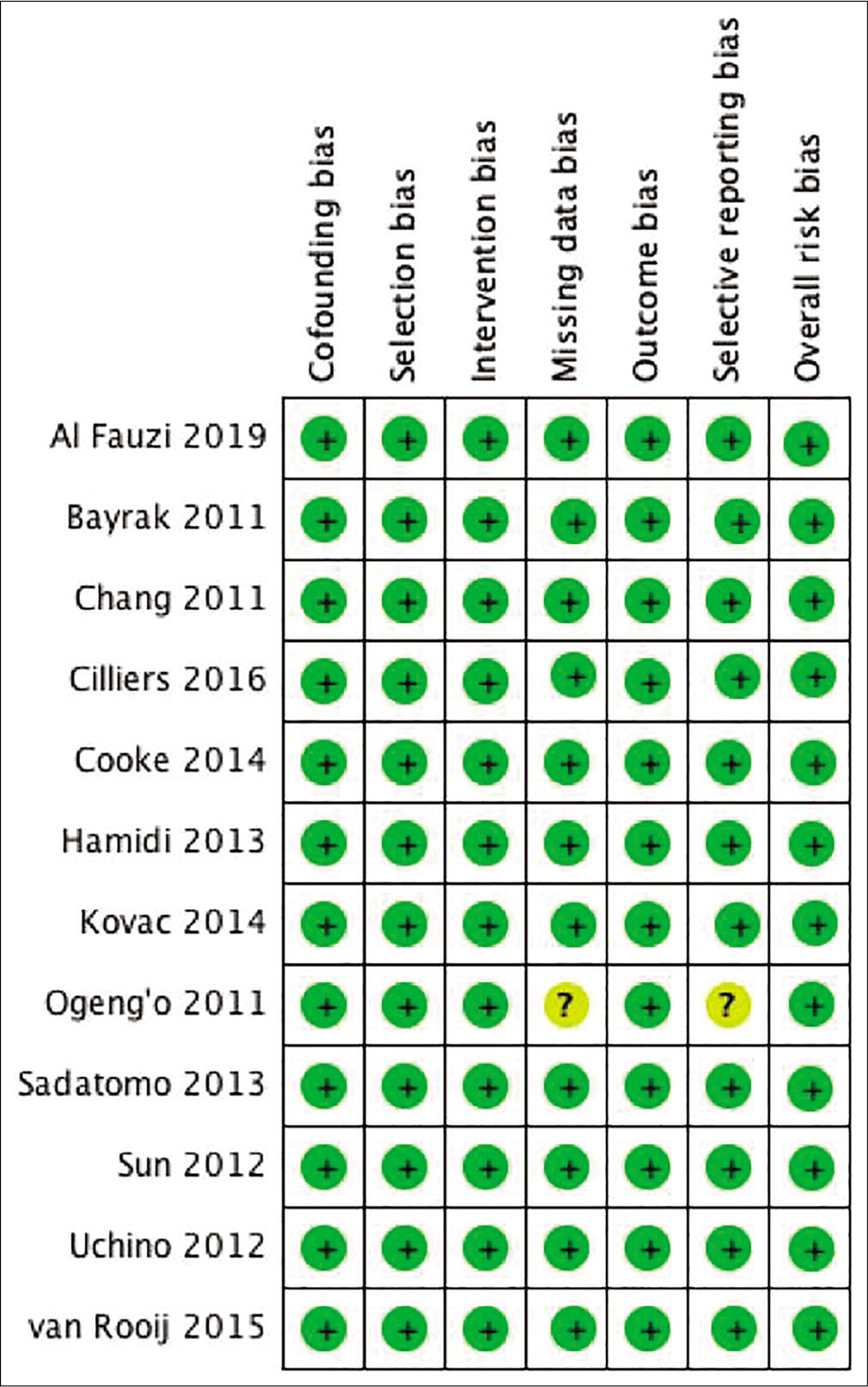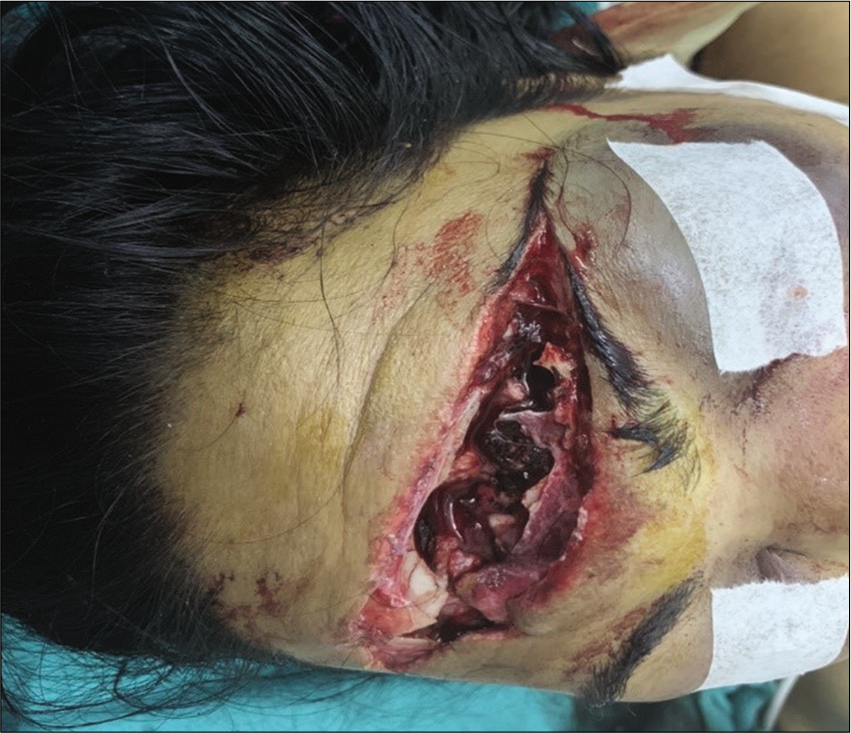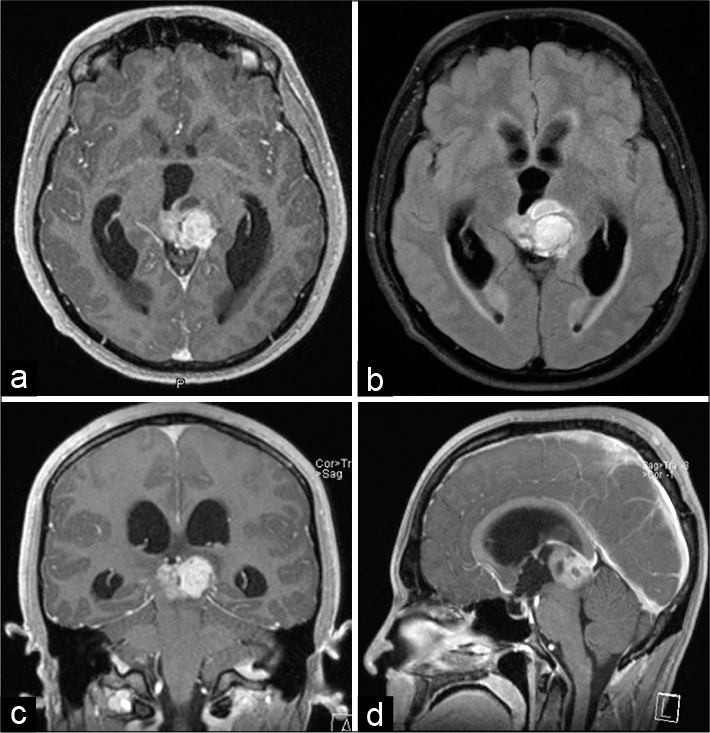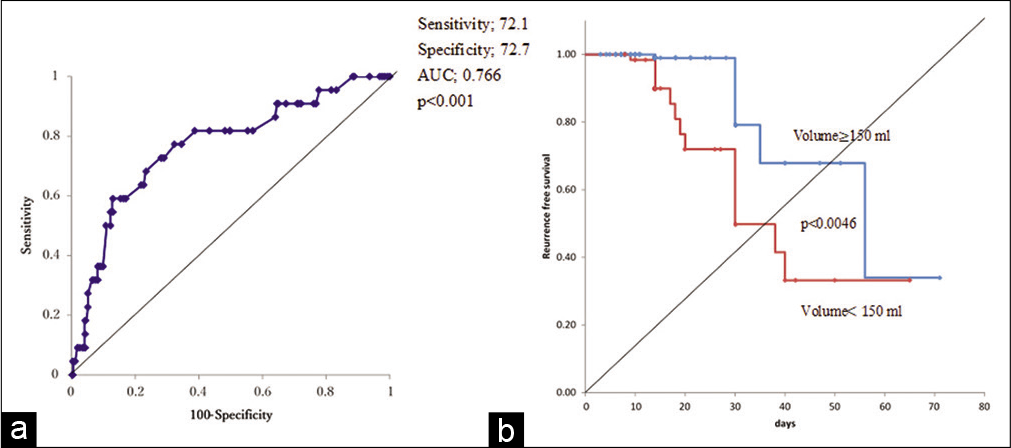Thoracic spine schwannoma presenting with traumatic spinal cord injury: A case report
Date of publication: 31-May-2021
Background: The presentation of a thoracic spinal tumor due to high-impact trauma is quite rare and we found no other case reported.
Giant posterior mediastinal schwannoma requiring a thoracoabdominal approach for excision: Case report and literature review
Date of publication: 25-May-2021
Background: A schwannoma is a tumor of the peripheral nerve sheath. They are the most common benign tumor; presenting at any age, and at any site of the body and also one of the most common posterior mediastinal tumors. Posterior mediastinal schwannoma is usually identified incidentally in chest radiographs and with follow-up imaging such as CT scan. Large posterior mediastinal schwannoma usually presents with local symptoms. To confirm diagnosis and obtain local control, surgical excision is the usual approach.
A case of segmental arterial mediolysis with subarachnoid hemorrhage due to anterior cerebral artery dissection followed by internal carotid artery dissection
Date of publication: 25-May-2021
Background: Segmental arterial mediolysis (SAM) causes subarachnoid hemorrhage (SAH) due to intracranial aneurysm rupture and arterial dissection. We encountered a case of SAM-related SAH due to ruptured dissection of the A1 segment of the anterior cerebral artery concomitant with internal carotid artery (ICA) dissection.
Pediatric middle meningeal artery embolization for chronic subdural hematoma: A case report
Date of publication: 25-May-2021
Background: The most common neuroradiological finding in pediatric nonaccidental trauma (NAT) is subdural hematoma (SDH). Management options for pediatric SDH range from conservative clinical surveillance to craniotomy or decompressive craniectomy. The middle meningeal artery (MMA) indirectly feeds the hematoma; thus, MMA embolization is an alternative or adjunct to current surgical treatments in adults. Herein, we present, to the best of our knowledge, the first reported case of successful MMA embolization in a pediatric patient as an adjunct to current standard treatment for chronic SDH (cSDH).
Delayed presentation of a traumatic scalp arteriovenous fistula
Date of publication: 25-May-2021
Background: Arteriovenous (AV) fistulas of the scalp are extracranial vascular malformations commonly caused by trauma and typically present within 3 years. Although they follow a benign course, they can be esthetically displeasing.
Correlations between preoperative clinical factors and treatment outcome of spinal meningiomas – A retrospective study of a series of 31 cases
Date of publication: 25-May-2021
Background: The purpose of the current study is to identify the correlations between the most important preoperative clinical factors and the outcome of surgery of spinal meningiomas (SM).
Neuroangiography patterns and anomalies of middle cerebral artery: A systematic review
Date of publication: 25-May-2021
Background: As the largest and most complex cerebral artery, the middle cerebral artery (MCA) patterns and anomalies are not fully reported. At present, there is confusion about the criteria for the different subtypes. The study of MCA patterns and anomalies is important because variants such as accessories or duplicates represent a high risk of failure during endovascular embolization or navigation during treatment for ischemic stroke. This study conducted a systematic review of studies on the neuroangiography patterns and anomalies of MCA.
Extradural abscess following synthetic fabric duraplasty
Date of publication: 25-May-2021
Background: Duraplasty refers to the neurosurgical process of reconstructing dural defect. Variety of materials is used for such reconstruction, including natural, semisynthetic, and synthetic materials. Although synthetic materials are readily available and easy to apply, these are associated with foreign body reaction which may lead to serious consequences in some cases. We describe one such rare instance of extradural abscess after polypropylene synthetic fabric duraplasty.
Parkinsonism reversed from treatment of pineal non-germinomatous germ cell tumor
Date of publication: 25-May-2021
Background: Parkinsonism is a rare complication of non-germinomatous germ cell tumors (NGGCTs) arising from the pineal region.
Intraoperative hematoma volume can predict chronic subdural hematoma recurrence
Date of publication: 25-May-2021
Background: We routinely measured the exact chronic subdural hematoma (CSDH) volume during single burr hole surgery. To date, several risk factors have been reported for CSDH recurrence, including sex, hematoma volume and degree of midline shift calculated from computed tomography, use of anticoagulants or antiplatelet medications, and alcohol consumption habits. The aim of this study was to clarify whether hematoma volume, in conjunction with other factors, can predict recurrence.


